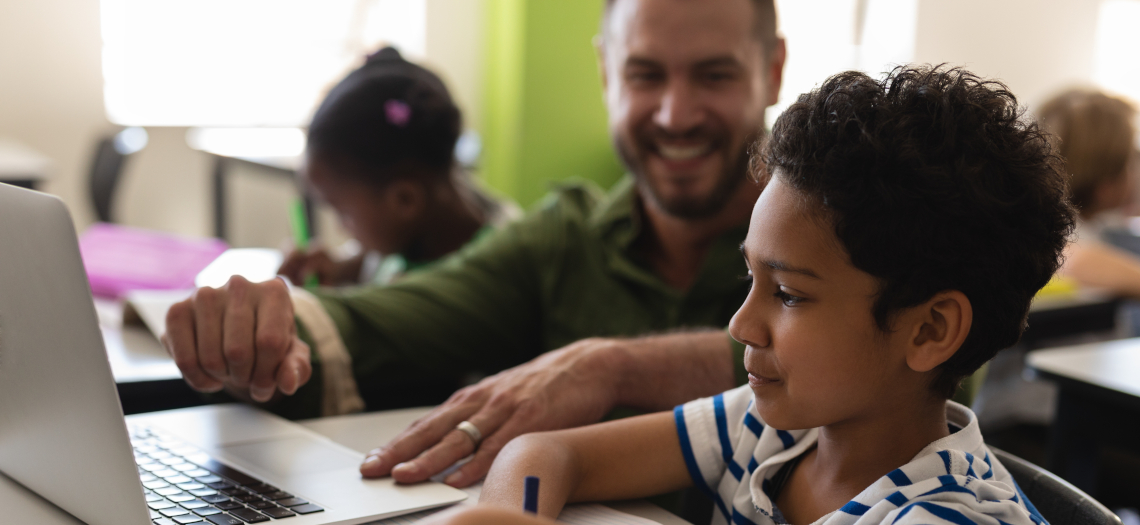With remote teaching being an option for many schools and universities all over the world, things begin to change when you consider the wellbeing of all those involved in the educational process.
For some time now, the PERMA model, developed by positive psychologist Martin Seligman around five building blocks – Positive emotion, Engagement, Relationships, Meaning, Accomplishment – has been used to measure wellbeing. And if you look at it carefully, the model has been successful because it manages to identify important aspects of a happy and fulfilled life.
Positive emotions, such as forgiveness and gratitude, are essential for our emotional balance. Engagement describes the state of fully using your skills to perform a challenging task. Remember the thrill you feel when “you’re in the zone”? Having this enriching experience in our life will make us appreciate more the things we do and feel better about ourselves.
Since humans are social beings, relationships are important not just for our wellbeing, but for our survival as well. The loneliness epidemic is considered a public health issue in some countries, so make sure that you cultivate meaningful relationships if you want to have a long, healthy, and happy life.
Last but not least, having a sense of accomplishment is essential for our self-esteem, and for the strength we need to carry on. We will face many ups and downs throughout our lives, but if we feel we have accomplished something, we will tend to forget the inevitable failures and focus more on the positive aspects of our lives.
PERMA 2.0 or digital wellbeing during remote teaching
So, the PERMA model seems to have it all. Except for one thing! Being created almost a decade ago – Martin Seligman published his seminal book “Flourish” in 2012 – PERMA does not include the digital component, which is pervasive nowadays in our lives.
Since remote teaching and learning might continue for a while, it’s high time to reconsider digital wellbeing for both students and teachers and adopt some guidelines for this new normal. A PERMA model for a digital society or PERMA 2.0:
Read more: 4 Steps towards digital wellness for students
Positive emotion
It’s hard not to give in to frustration, anger, and sadness when we think about the current situation. But we should also be grateful that we can still meet online and learn from each other. Both students and teachers should try to reconsider remote teaching and be grateful for their advantages.
Read more: From normal to better: Using what we’ve learned to improve education
Engagement
It’s pointless to do a sloppy job just because your feed frustrated by the current situation. It goes both ways: aloof teachers, sending homework by email, without doing any teaching; students logging on Zoom with their camera and microphone off, just to have their name on the attendance sheet. Be present and do the best you can; it’s the best way of coping with any uncomfortable situation.
Read more: Teaching students how to manage digital distractions
Relationships
School is not all about knowledge transfer. The social experience offered by schools is essential for the development of any child. Since students are deprived of this experience during the remote teaching period, try to recreate it online. Let them see that online interaction is a safe space where they can share their emotions, especially during these challenging times.
Read more: 7 Tips on how to adapt teacher-student rapport while teaching online
Meaning
Try to see the meaning of it all. In our opinion, the lesson that can all learn from this pandemic is resilience. “The show must go on” can be turned into “Our school must go on”. We may not be very happy about how it’s going, but it’s important to show to all those involved that they have the strength to carry on.
Read more: How to S.T.E.A.M. up distance learning
Accomplishment
Be happy and thankful for the small victories. For instance, a student had problems at school but is doing relatively well under the circumstances. Students can use the platform, send homework in time, they engage in both synchronous and asynchronous sessions. Aim higher, if you will, but take your time to celebrate those little things.
Read more: Adopting the asynchronous mindset for better online learning
Final thoughts
To sum up, keep in mind that especially during these times, psychological wellbeing is as important as the results you deliver. Use the PERMA 2.0 model to reconsider the current situation and to address your emotions. Be patient, resilient, and hope for the best. Or as they say it “Keep calm and carry on”.







